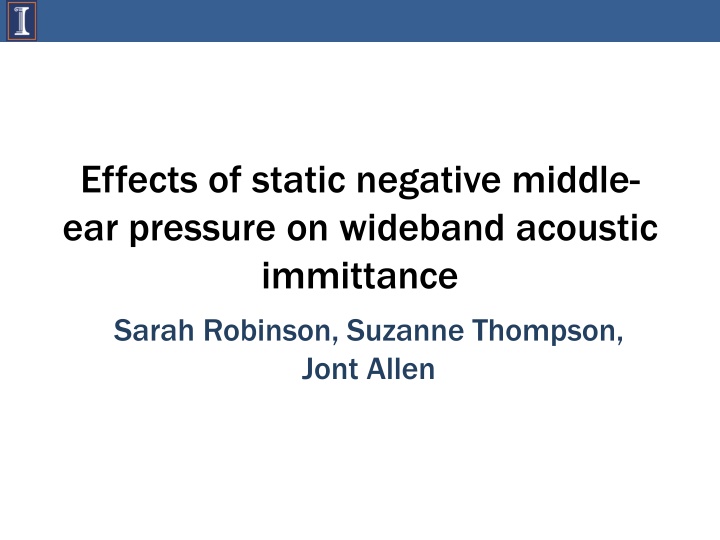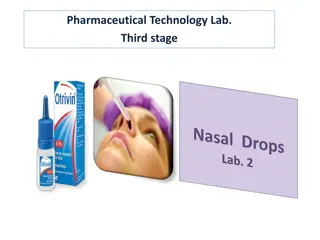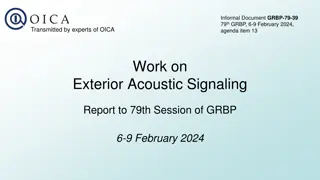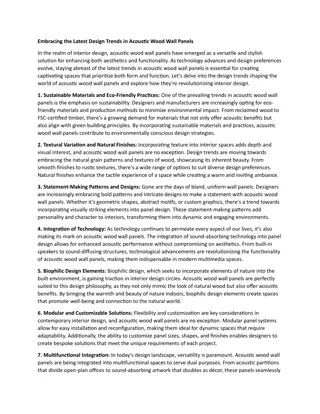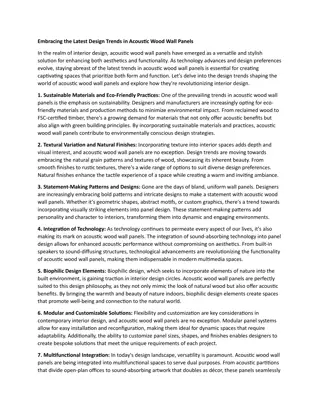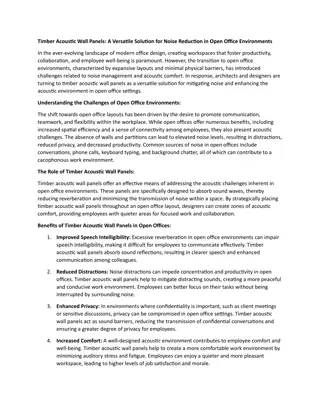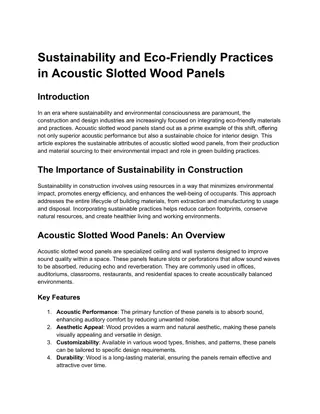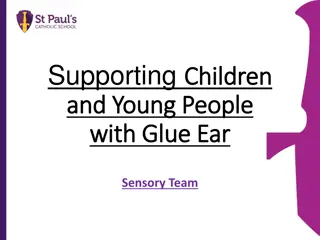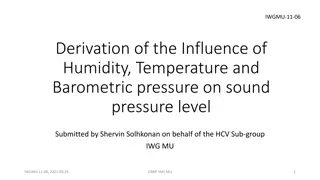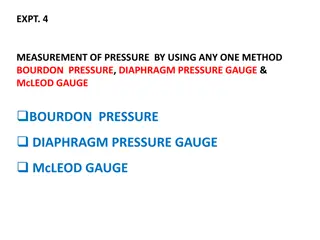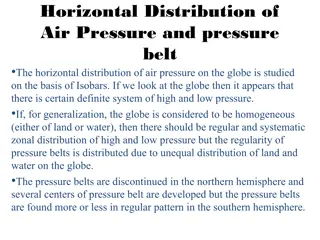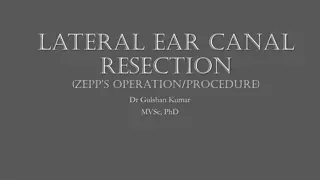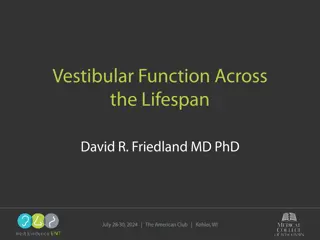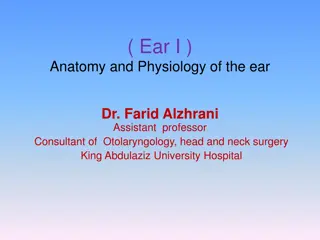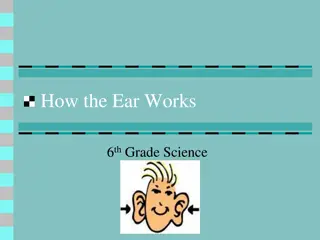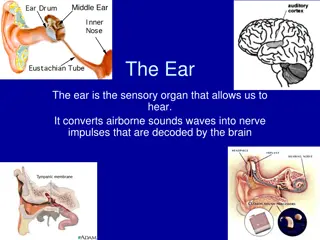Effects of Negative Middle Ear Pressure on Acoustic Immittance
Negative middle ear pressure (NMEP) can impact wideband acoustic immittance measurements, particularly in individuals with Eustachian tube dysfunction. This study explores the effects of induced NMEP on various acoustic parameters and assesses changes in power absorbance. Methods included measuring wideband acoustic immittance with ambient ear canal pressure and inducing NMEP via the Toynbee maneuver. Results show varied changes in power absorbance due to NMEP.
Download Presentation

Please find below an Image/Link to download the presentation.
The content on the website is provided AS IS for your information and personal use only. It may not be sold, licensed, or shared on other websites without obtaining consent from the author.If you encounter any issues during the download, it is possible that the publisher has removed the file from their server.
You are allowed to download the files provided on this website for personal or commercial use, subject to the condition that they are used lawfully. All files are the property of their respective owners.
The content on the website is provided AS IS for your information and personal use only. It may not be sold, licensed, or shared on other websites without obtaining consent from the author.
E N D
Presentation Transcript
Effects of static negative middle- ear pressure on wideband acoustic immittance Sarah Robinson, Suzanne Thompson, Jont Allen
Negative middle ear pressure (NMEP) NMEP can affect other acoustic measurements of hearing (e.g. otoacoustic emissions) Static NMEP is very common It is typically due to Eustachian tube dysfunction It often occurs concurrently with middle ear fluid or infection Middle ear pressure in normal ears varies often It is slightly negative during waking hours A NMEP smaller than -100 [daPa] is considered normal 1 1
Wideband acoustic immittance (WAI) WAI refers to a set of quantities, including the admittance, impedance, reflectance, absorbance, etc. Many applications consider the power reflectance and absorbance ( independent of ear canal length) 2 ( ) p f reflected = 2 | ( | ) f ( ) p f incident 2 2 ( ) ( ) f f tm 2 = ( ) 1 ( ) A f f 2 2
Methods WAI was measured with ambient ear canal pressure Subjects with normal middle ears induced negative middle ear pressure (NMEP) via the Toynbee maneuver Middle ear pressure was assessed separately via tympanometry Middle ear pressure = tympanic peak pressure (TPP) Tympanogram Tympanogram TM Compliance 8 trials at ambient middle ear pressure (AMEP) were alternated with 8 trials at NMEP @ 226 [Hz] Subjects were able to induce consistent NMEPs -400 0 200 TPP We focus on individual ears (lots of retest data) Ear Canal Pressure [daPa] 3 3
Methods AMEP NMEP 4 4
WAI Results: Power Absorbance AMEP NMEP 5 5
WAI Results: Power Absorbance AMEP NMEP 5 5
WAI Results: Power Absorbance AMEP Wideband changes in power absorbance due to NMEP vary in both magnitude and frequency range do not appear to have a simple dependence on pressure NMEP 6 6
Dependence on static ME pressure AMEP NMEP 8 8
WAI at the tympanic membrane (TM-WAI) The unknown residual ear canal (REC) delay may removed from the reflectance phase (Robinson et al., 2013) Using our methods, rec(f) may account for a lossless REC of varying area Ctm Lrec rc (f) = rec(f) x tm(f) | (f)| = 1 x | tm(f)| 9 9
WAI at the tympanic membrane (TM-WAI) At low frequencies, the REC volume is approximated by a compliance A resistor is necessary to match the transmission lines of the middle ear and cochlea (Zwislocki 1962, Lynch 1982) Ctm Lrec Ctm rc Crec rc (f) = rec(f) x tm(f) | (f)| = 1 x | tm(f)| Low frequency approximation 10 10
TM-WAI: Impedance 11 11
TM-WAI: Impedance rc Real Imaginary Ctm Crec rc 12 12
TM-WAI: Impedance rc -1/2 fCtm Real Imaginary Ctm Crec rc 12 12
TM-WAI: Impedance NMEP = -156 [daPa] NMEP = -156 [daPa] Real Imaginary 13 13
Residual ear canal (REC) volume The REC volume does not depend on NMEP Ctm Crec rc AMEP NMEP Volume (Crec) [mL] * * * Growing NMEP 14 14
TM Compliance NMEP NMEP The REC volume does not depend on NMEP The TM compliance does depend on NMEP Ctm Crec rc AMEP NMEP Volume (Crec) [mL] C tm[mL] * * * * * * * * * * * * * Growing NMEP Growing NMEP 14 14
Mechanisms for NMEP-dependent change NMEP decreases the compliance Ctm at the tympanic membrane (TM) The TM is retracted (Shaver & Sun 2013, Voss et al. 2012) Often assumed to be the main source of compliance change The TM acts as a delay line in normal ears (Puria & Allen 1998) Nonlinear compliance is likely related to middle ear ligaments WAI changes due to NMEP resemble stiffened annular ligament (AL) changes (e.g. acoustic stapedius reflex, Feeney & Keefe 1999) The tensor tympani (TT) may cause similar WAI changes to the AL (M ller 1983, Bance et al. 2013, Aron et al. 2015), but little data exists to quantify this in human ears 15 15
Conclusions We can directly estimate the complex WAI at the TM The residual ear canal delay (independent of NMEP) is removed WAI changes due to NMEP vary in magnitude and frequency range The most significant decrease in power absorbance level occurs from 0.8-1.9 [kHz] TPP is a significant but imperfect predictor of WAI change The aggregate middle ear compliance Ctm decreases due to NMEP WAI change is well described by a simple model This does not require selective averaging of frequency bands 16 16
Clinical Implications WAI is not a strong predictor of NMEP level (typically measured by TPP) However, we can evaluate Eustachian tube function using WAI WAI provides frequency-specific information about middle ear transmission that tympanometry does not Changes in WAI due to NMEP are generally too small to impact hearing thresholds, however Can affect measurement of otoacoustic emissions (OAEs), due to forward and reverse transmission through the middle ear We predict that frequency-specific changes in DPOAEs/TEOAEs are related to changes in WAI 17 17
Thanks for listening! Contact: jontalle@illinois.edu, srrobin2@illinois.edu Aron, M., Floyd, D., Bance, M. (2015). Voluntary eardrum movement: A marker for tensor tympani contraction? Otol Neurotol, 36(2), 373 381. Bance, M. , Makki, F. M., Garland, P., et al. (2013). Effects of tensor tympani muscle contraction on the middle ear and markers of a contracted muscle. Laryngoscope, 123(4), 1021 1027. Feeney, M. P. & Keefe, D. H. (1999). Acoustic reflex detection using wide-band acoustic reflectance, admittance, and power measurements. J Speech Lang Hear Res, 42(5), 1029 1041. Lynch III, T. J., Nedzelnitsky, V., Peake, W. T. (1982). Input impedance of the cochlea in cat. J Acoust Soc Am, 72(1), 108 130. M ller, A. R. (1983). Auditory Physiology. Academic Press, Inc., New York, New York. Puria, S. & Allen, J. B. (1998). Measurements and model of the cat middle ear: evidence of tympanic membrane acoustic delay. J Acoust Soc Am, 104, 3463 3481. Robinson, S. R., Nguyen, C. T., Allen, J. B. (2013). Characterizing the ear canal acoustic impedance and reflectance by pole- zero fitting. Hear Res, 301, 168 182. Rosowski, J. J., Nakajima, H. H., Hamade, M. A., et al. (2012). Ear-canal reflectance, umbo velocity, and tympanometry in normal- hearing adults. Ear Hear, 33(1), 19 34. Shaver, M. D. & Sun, X. M. (2013). Wideband energy reflectance measurements: effects of negative middle ear pressure and application of a pressure compensation procedure. J Acoust Soc Am, 134(1), 332 341. Sun, X. M. & Shaver, M. D. (2009). Effects of negative middle ear pressure on distortion product otoacoustic emissions and application of a compensation procedure in humans. Ear Hear, 30(2), 191 202. Voss, S. E. , Merchant, G. R., Horton, N. J. (2012). Effects of middle-ear disorders on power reflectance measured in cadaveric ear canals. Ear Hear, 33(2), 195 208. Zwislocki, J. (1962). Analysis of the middle-ear function. Part I: Input impedance. J Acoust Soc Am, 34, 1514 1523.
